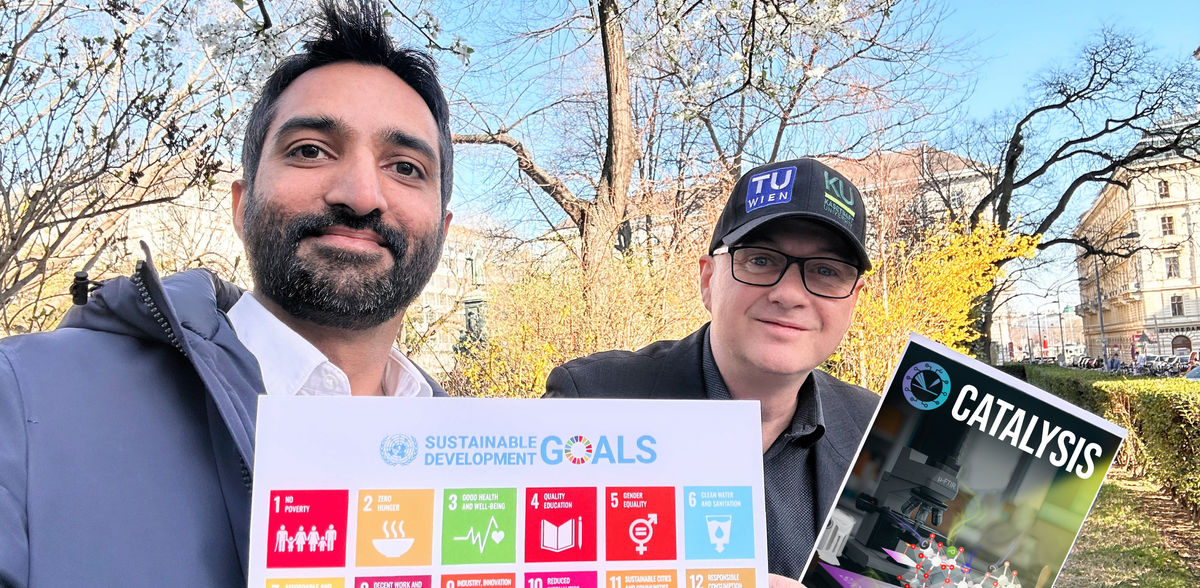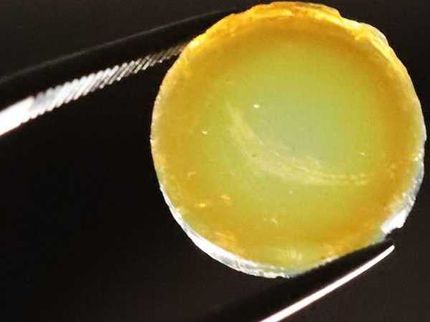The self-cleaning wall paint
Catalysis research makes it possible: new wall paint can clean itself through exposure to sunlight and chemically break down pollutants from the air.
Advertisement
Beautiful white wall paint usually does not stay beautiful and white forever. Various substances from the air often accumulate on the surface. This can be a desirable effect because it makes the air cleaner for a short time - but over time the paint discolors and needs to be renewed.
A research team from TU Wien and the Università Politecnica delle Marche (Italy) has now succeeded in developing special titanium oxide nanoparticles that can be added to ordinary, commercially available wall paint to give it self-cleaning properties: The particles are photocatalytically active; they can use the light of the sun to not only bind substances from the air, but also subsequently break them down. The wall makes the air cleaner - and cleans itself at the same time. Waste was used as the starting material for the new wall paint: metal shavings that would otherwise have to be thrown away and dried olive leaves.
Modified titanium oxide in the wall paint
A wide variety of pollutants can be found in indoor air - from residues from cleaning agents and hygiene products to molecules produced during cooking or released by materials such as leather. In some cases, this can lead to symptoms known as "sick building syndrome".
"For years, people have been trying to use special wall paints to purify the air," says Prof. Günther Rupprechter from the Institute of Materials Chemistry at TU Wien. "Titanium oxide nanoparticles are particularly interesting in this context. They can bind and break down a wide range of pollutants."
However, simply adding ordinary titanium oxide nanoparticles to the paint impairs the durability of the paint: just as pollutants are broken down by the particles, they can also make the paint itself unstable and crack. In the worst case, volatile organic molecules can even be released, which in turn can be harmful to health. After a certain time, the paint layer becomes gray and unsightly, at which point it must be replaced at the latest.
Self-cleaning through light
However, the nanoparticles can clean themselves when they are irradiated with UV light. Titanium oxide is a so-called photocatalyst - a material that enables chemical reactions when exposed to suitable light. The UV radiation creates free charge carriers in the particles, with the help of which the captured pollutants from the air can be broken down into small particles and released again. In this way, the pollutants are rendered harmless, but do not remain permanently attached to the wall paint. The wall paint remains stable in the long term.
In practice, however, this is of little use - after all, it would be extremely time-consuming to repeatedly expose the wall to intense UV light in order to maintain the self-cleaning process. "Our aim was therefore to modify these particles in such a way that the photocatalytic effect can also be induced by ordinary sunlight," explains Günther Rupprechter.
This is achieved by adding certain additional atoms to the titanium oxide nanoparticles, such as phosphorus, nitrogen and carbon. This changes the light frequencies that can be absorbed by the particles, so that photocatalysis is also triggered by ordinary visible light instead of just UV light.
96% removal of pollutants
"We have now investigated this phenomenon in great detail using a variety of different surface and nanoparticle analysis methods," says Qaisar Maqbool, the first author of the study. "This allowed us to show exactly how these particles behave before and after they are added to the wall paint."
The research team mixed the modified titanium oxide particles with ordinary, commercially available wall paint and rinsed a surface painted with it with a solution containing pollutants. Sunlight was then able to break down 96% of the pollutants. The paint itself does not change - because the pollutants are not only bound, but also broken down with the help of sunlight.
Waste as a raw material
It is also important for the commercial success of such paints that no overly expensive raw materials are required. "In catalysis, for example, precious metals such as platinum or gold are used. In our case, however, elements that are readily available everywhere are sufficient: To obtain phosphorus, nitrogen and carbon, we used dried leaves from olive trees, and we obtained the titanium for the titanium oxide particles from metal waste that is normally simply thrown away," says Günther Rupprechter.
The new type of wall paint therefore combines several advantages at the same time: it can render pollutants from the air harmless, it lasts longer than other paints - and it is even resource-friendly in its production and can be obtained from recycled materials. Further experiments are being carried out and commercialization of the wall paint is planned.
Note: This article has been translated using a computer system without human intervention. LUMITOS offers these automatic translations to present a wider range of current news. Since this article has been translated with automatic translation, it is possible that it contains errors in vocabulary, syntax or grammar. The original article in German can be found here.































































